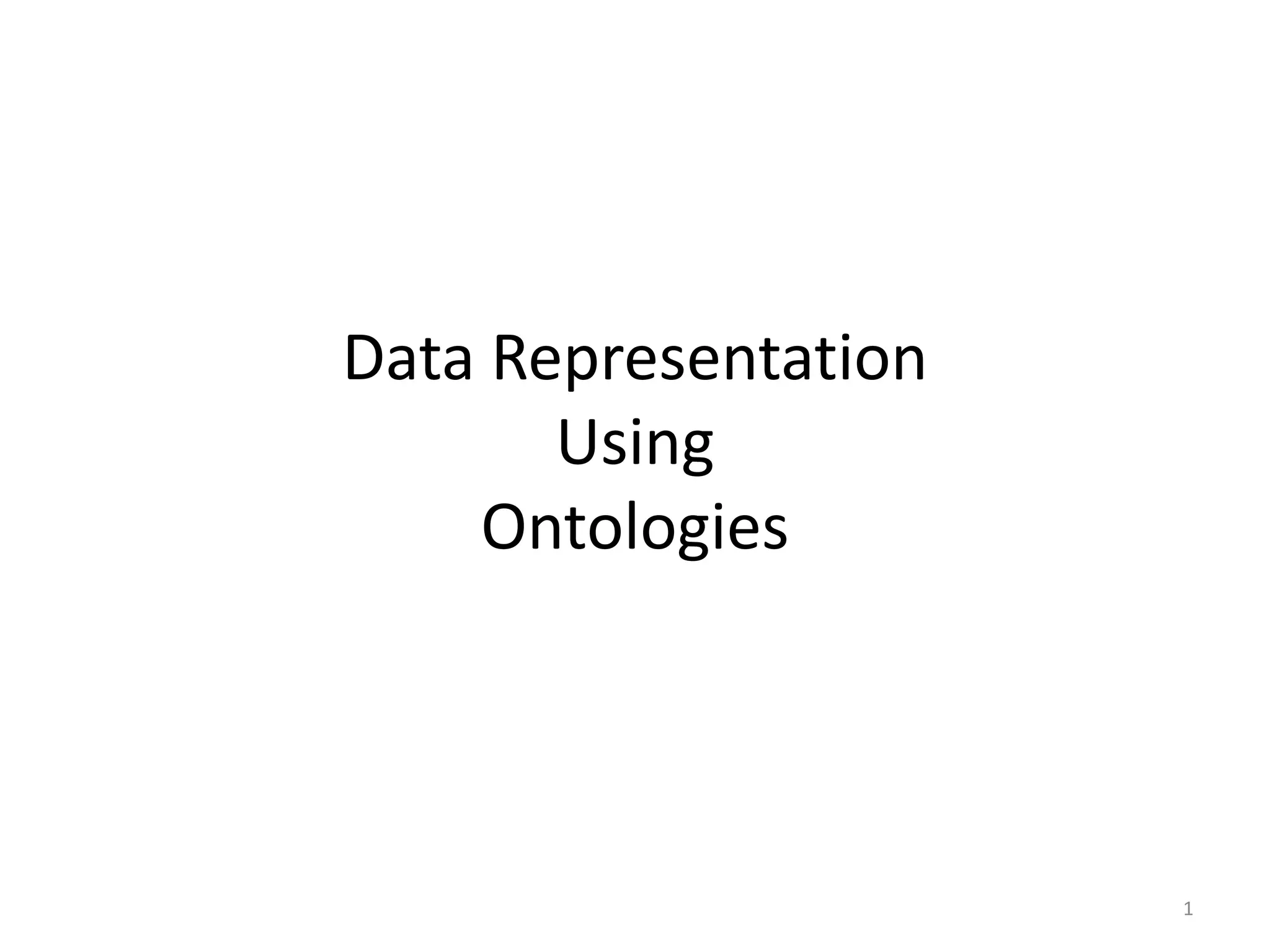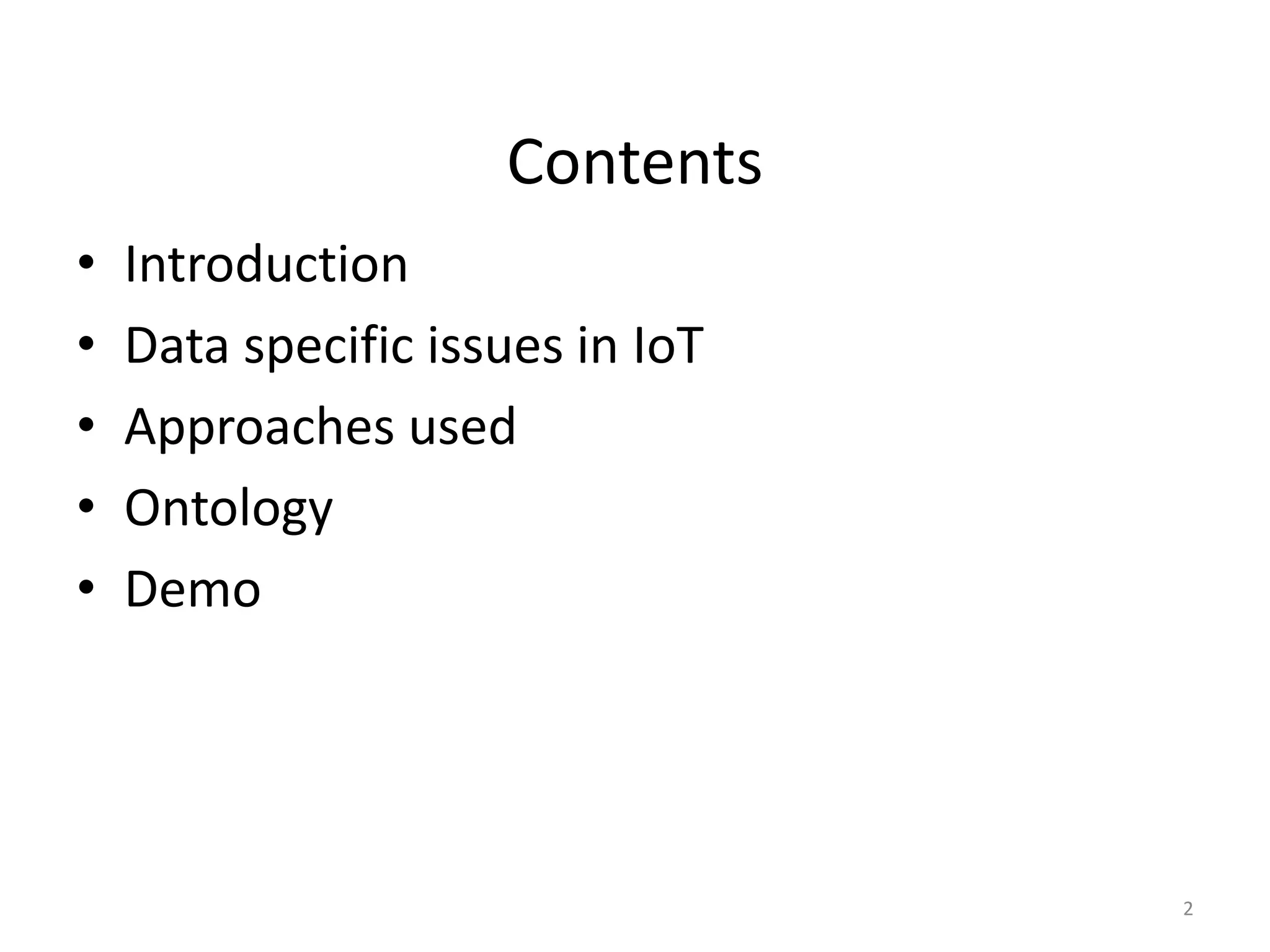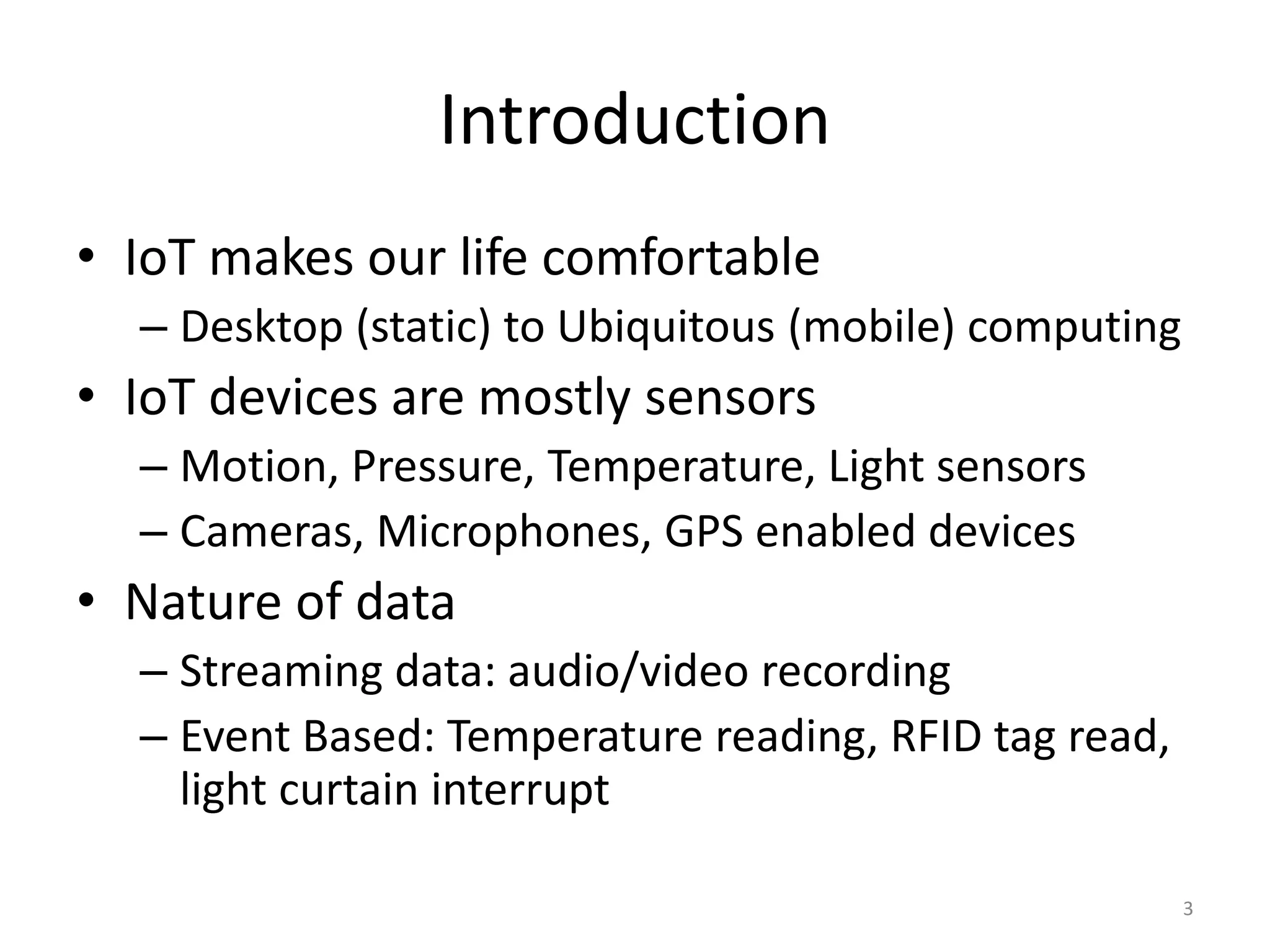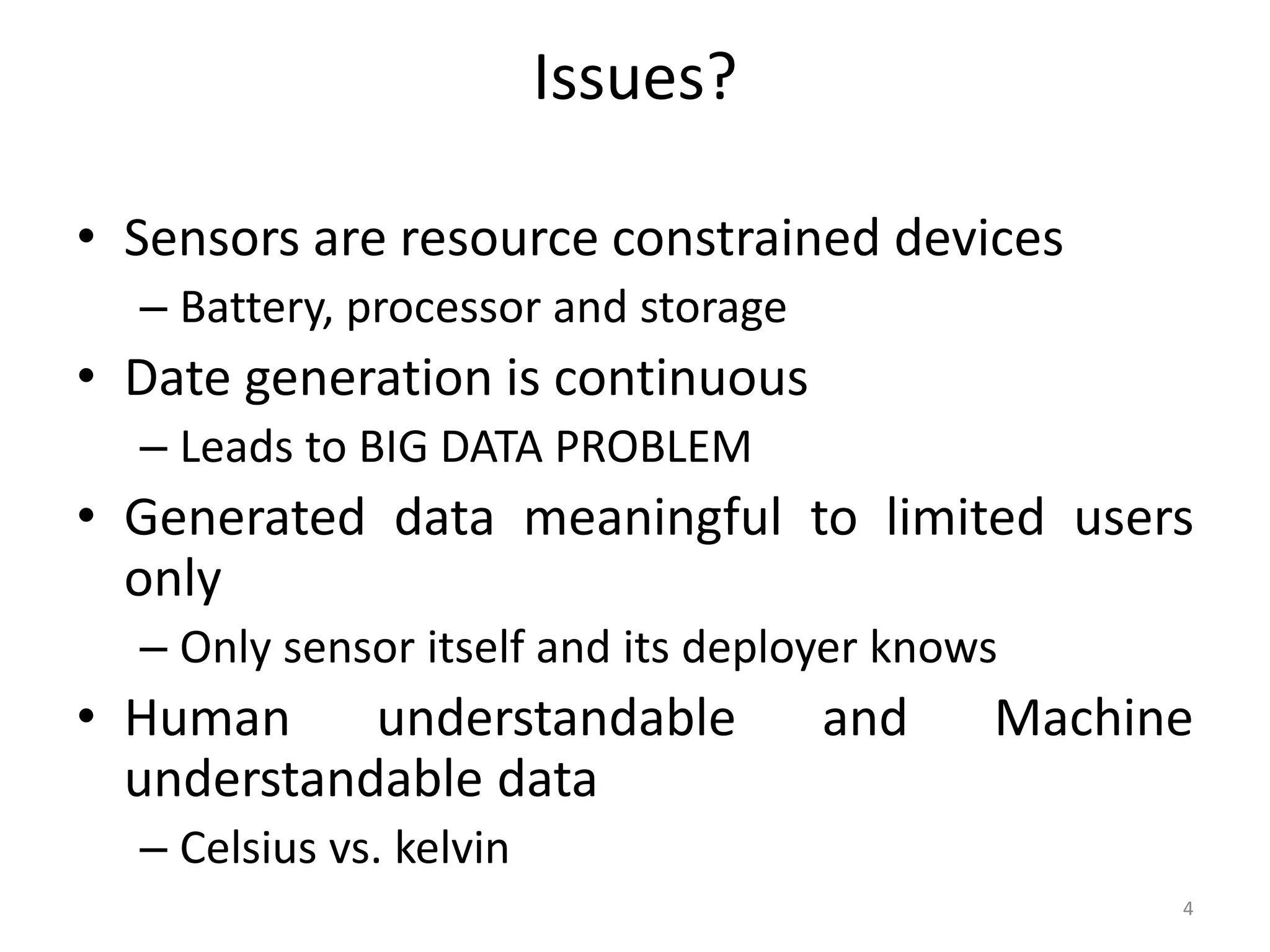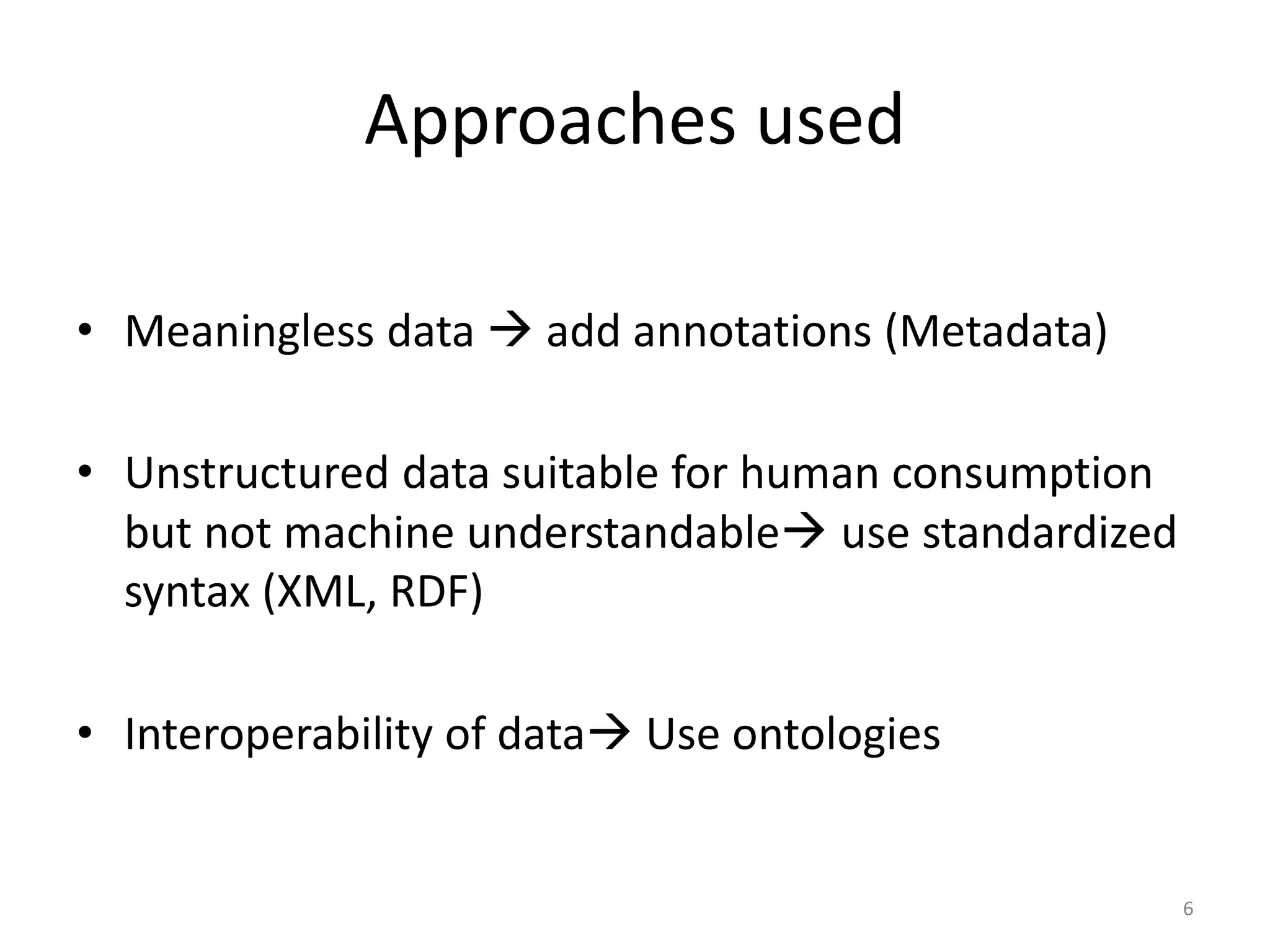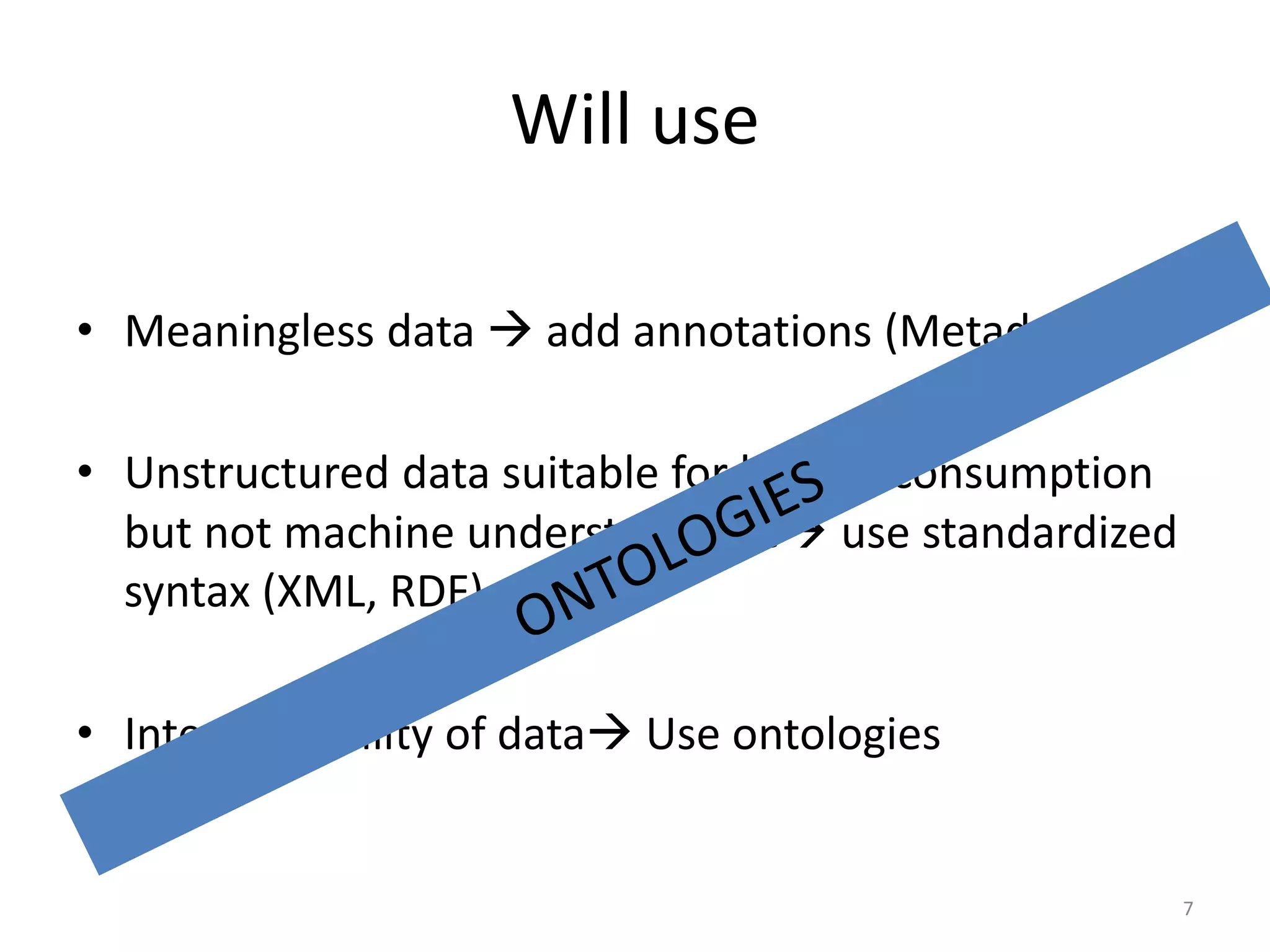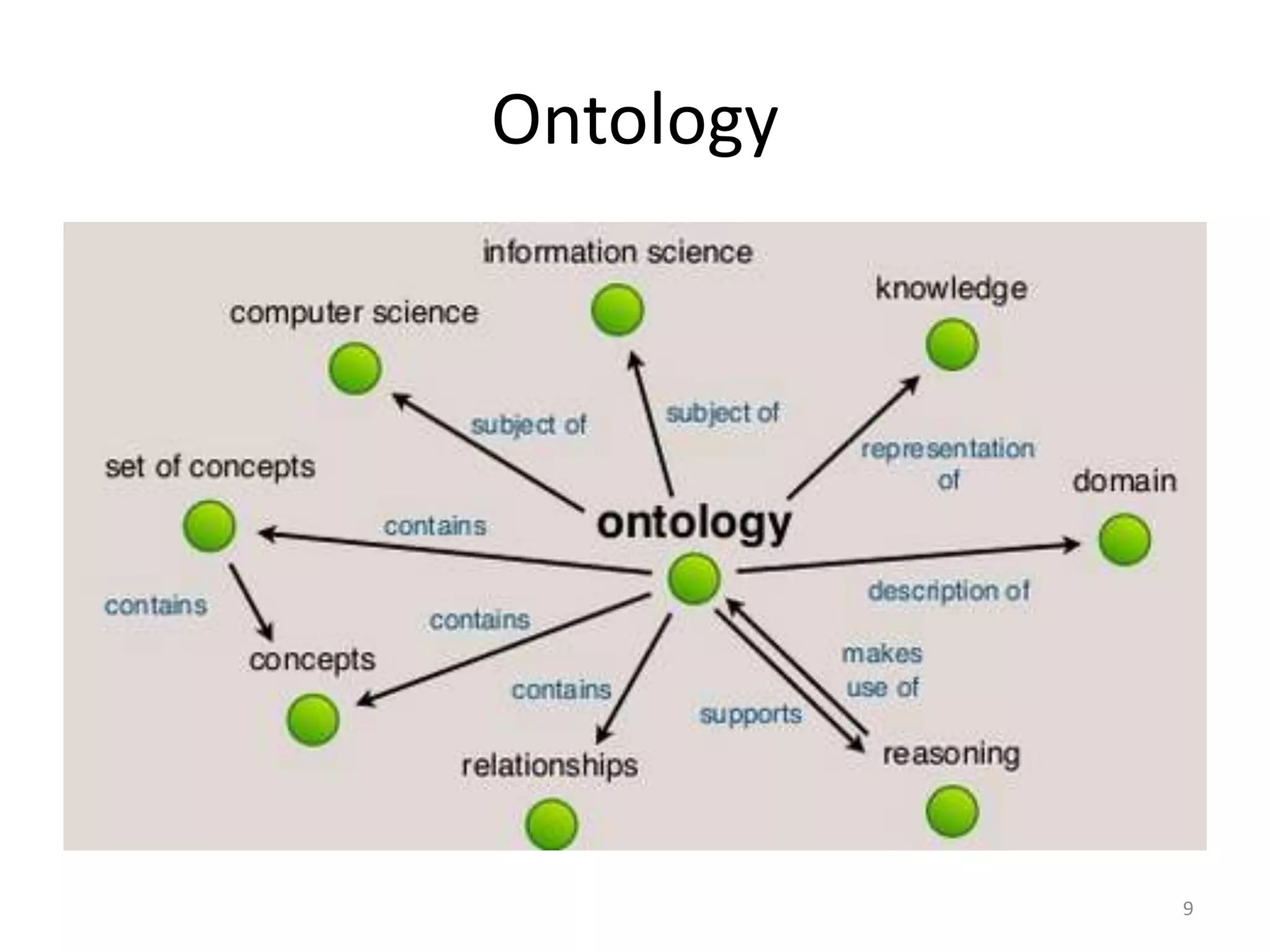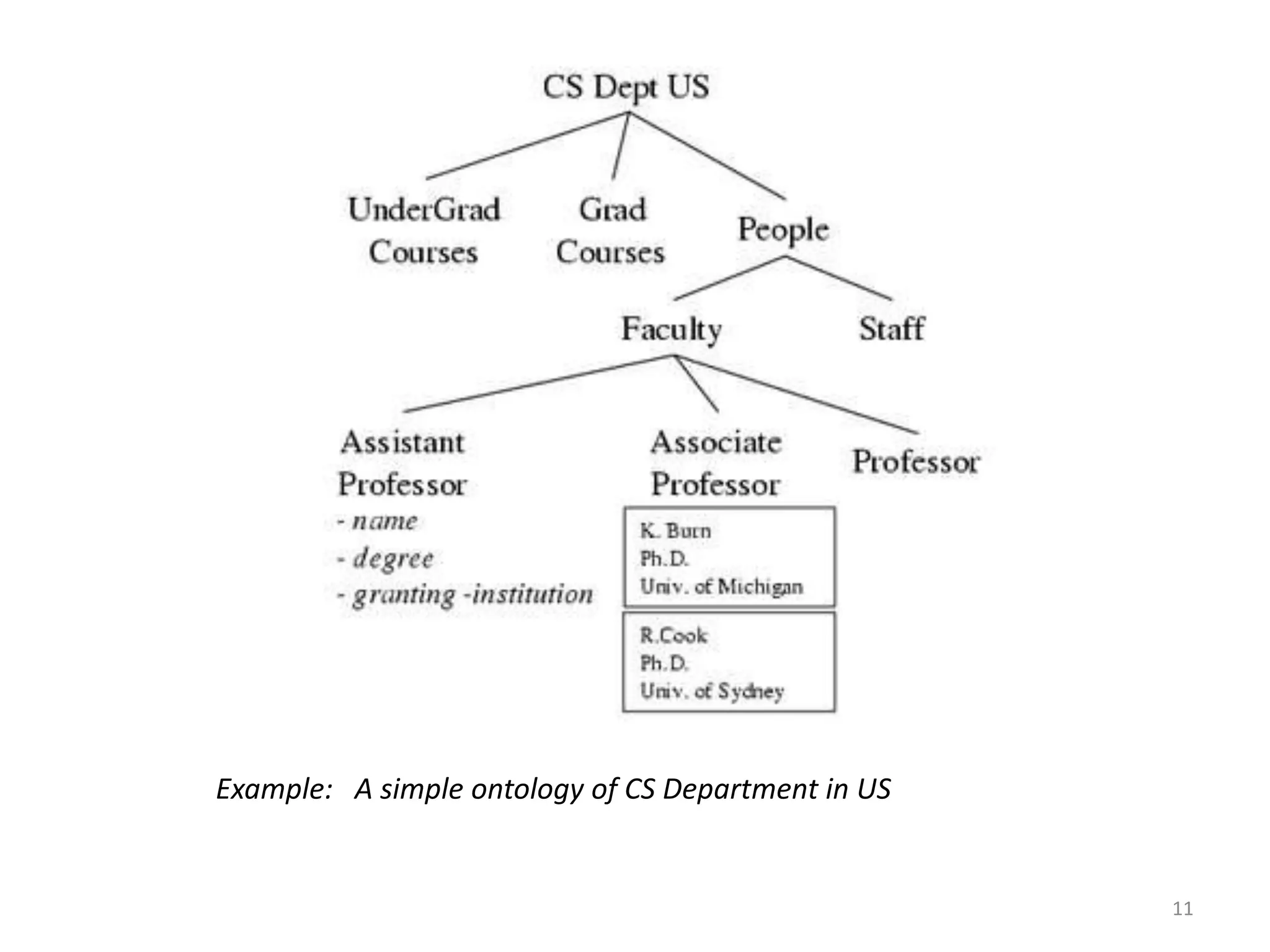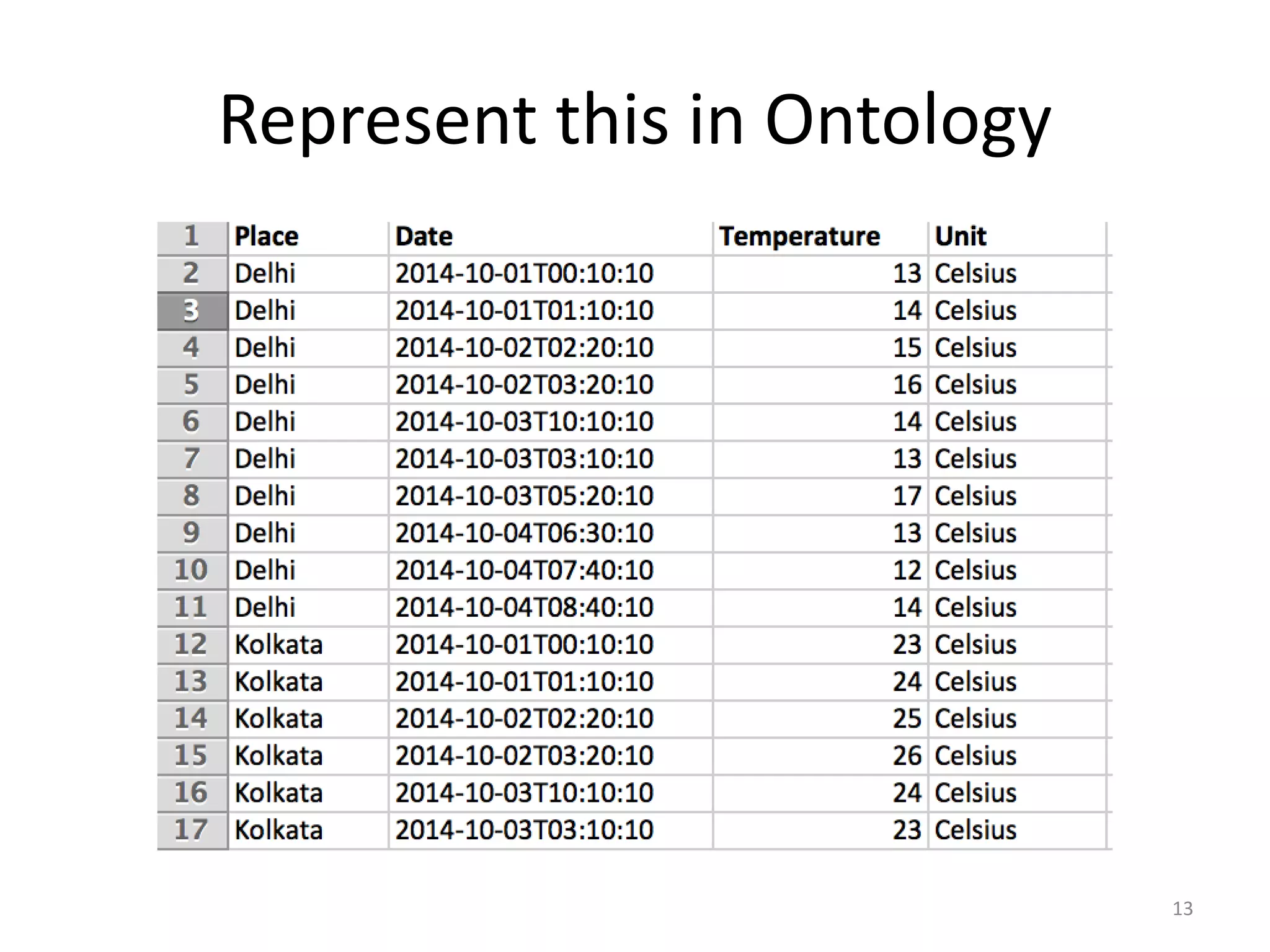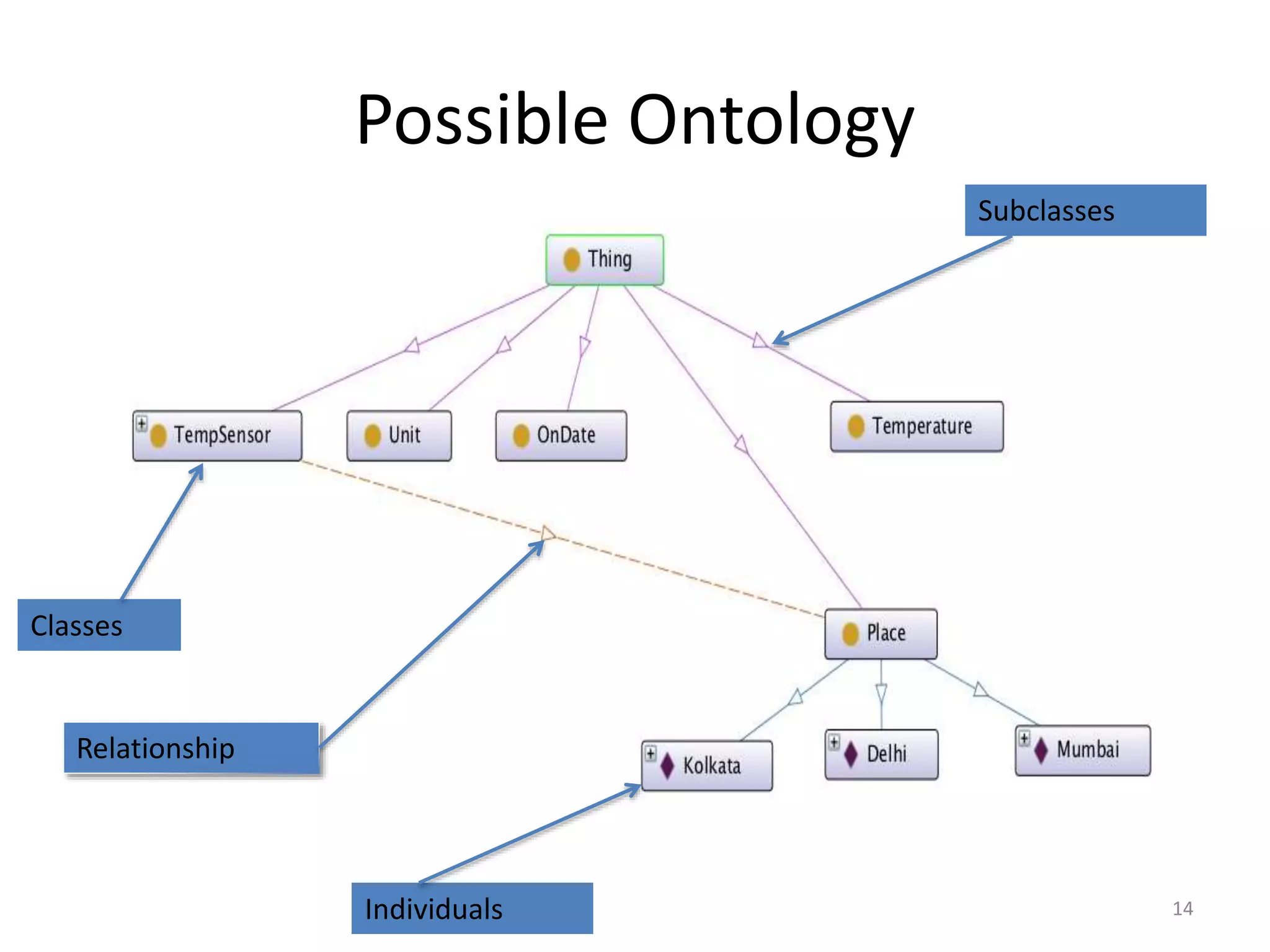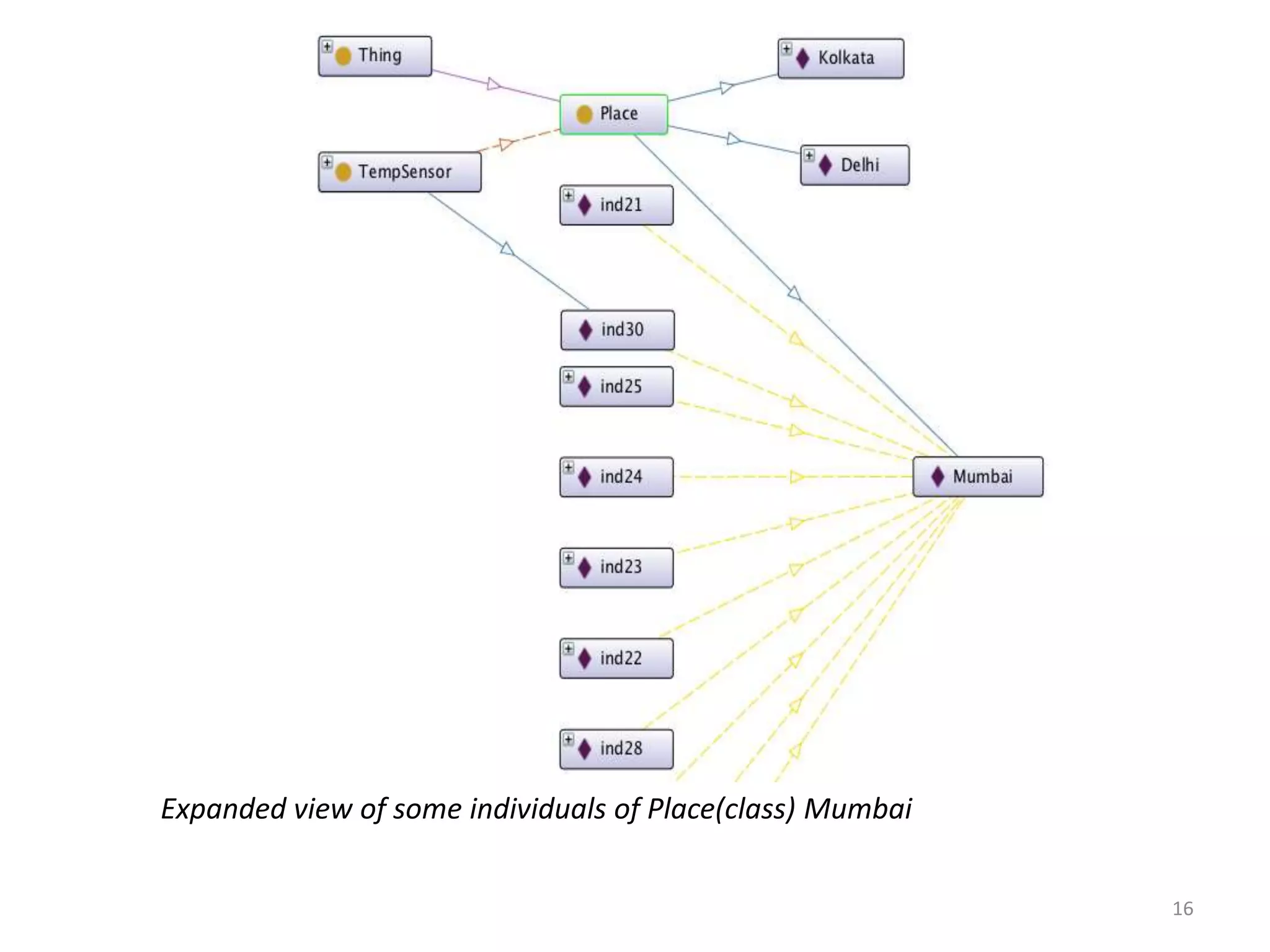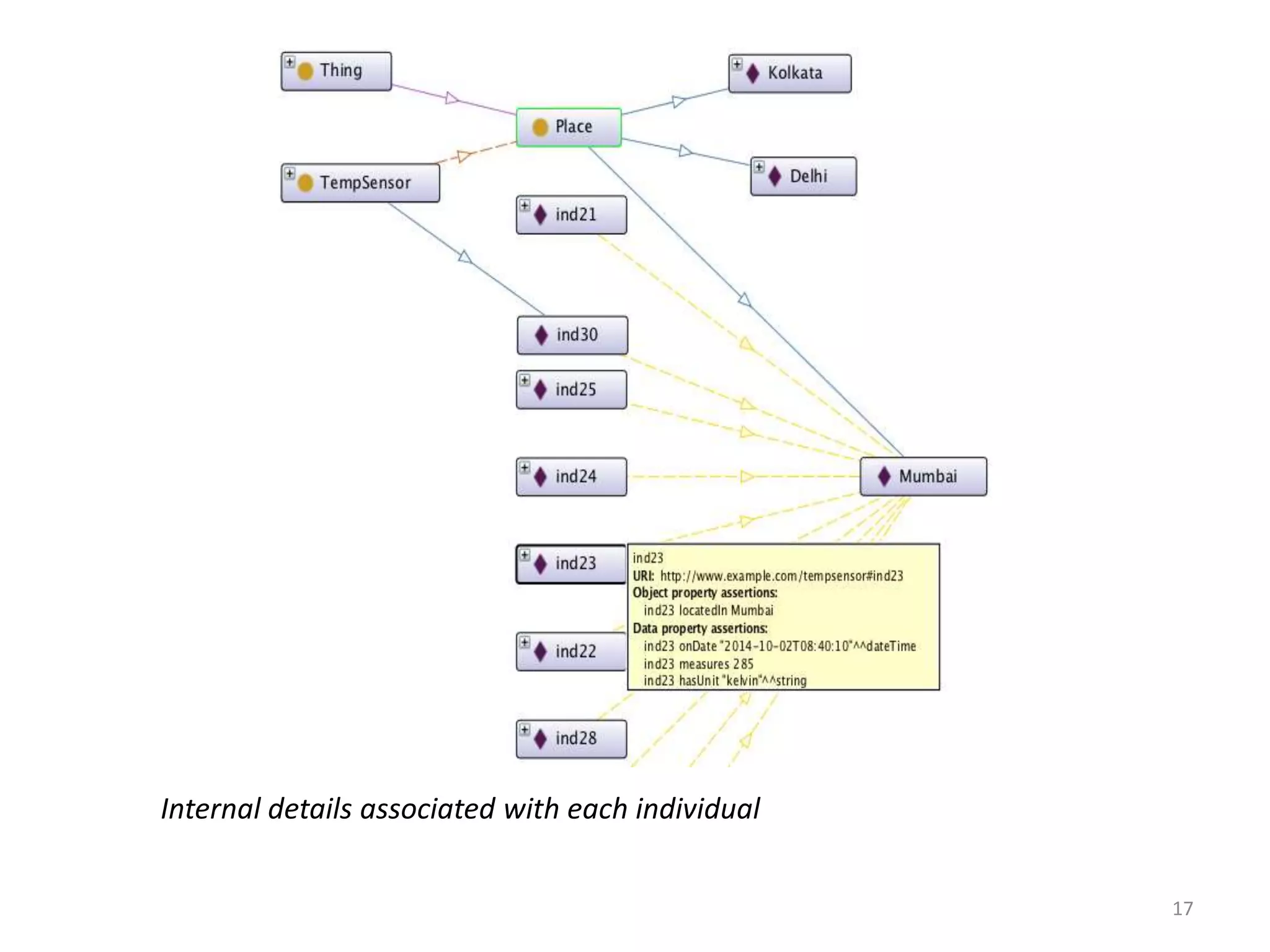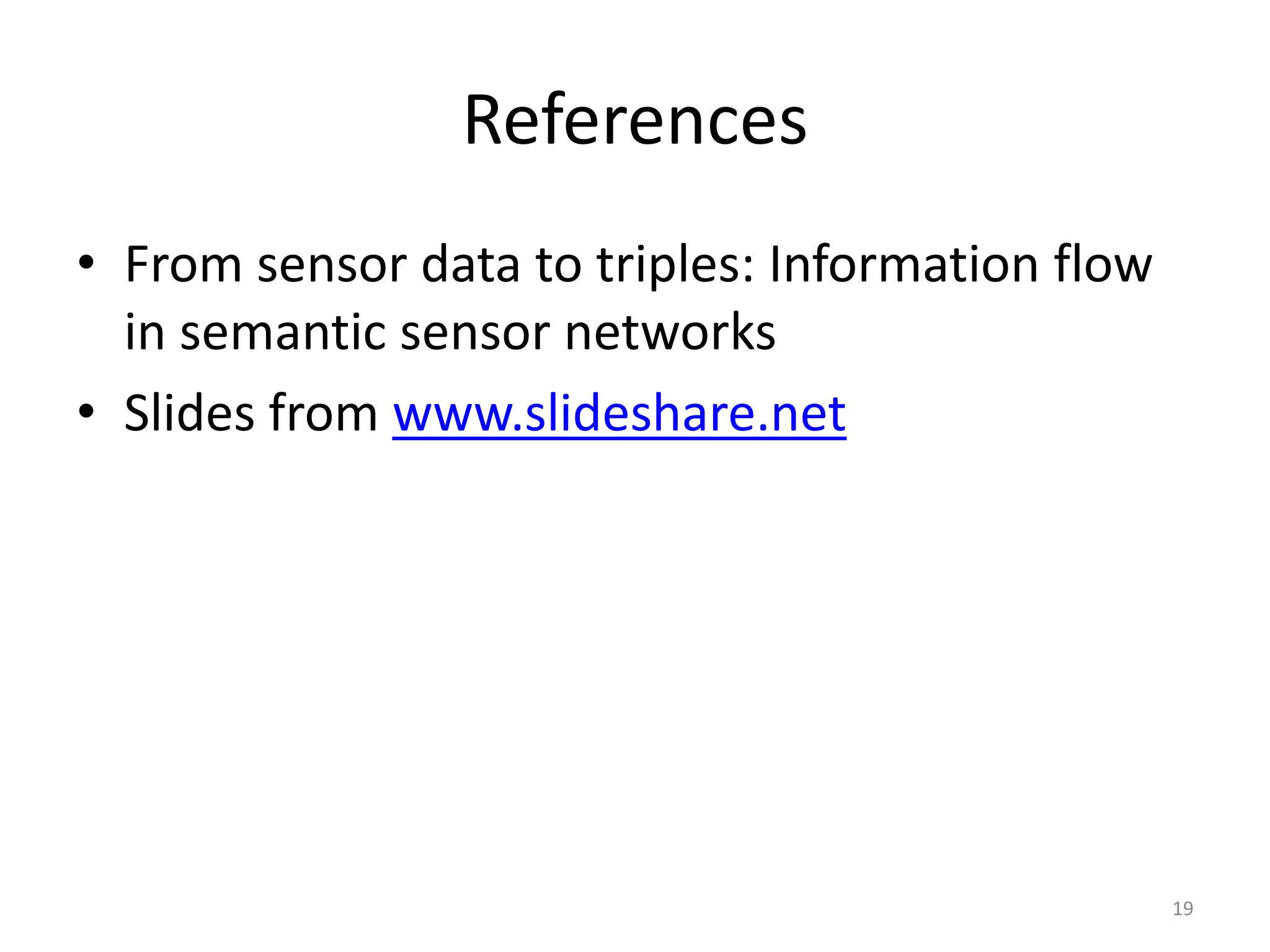The document discusses the representation of data using ontologies in the context of the Internet of Things (IoT), highlighting key issues such as resource constraints of sensors, the continuous generation of big data, and the challenge of making data understandable for both humans and machines. It explains the use of annotations, standardized syntax, and ontologies to address these issues and facilitate data interoperability. Ontologies are presented as a data model essential for sharing knowledge, enabling reuse, and allowing reasoning about concepts within a domain.
